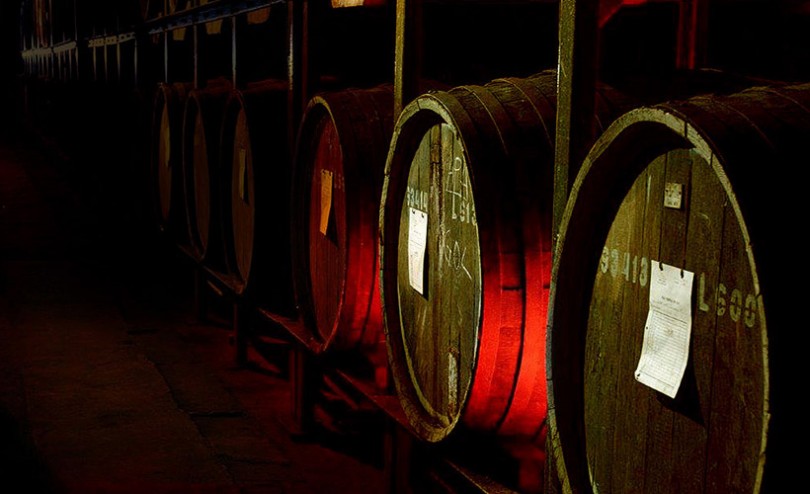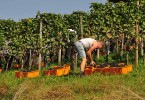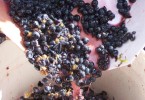Once there was malolactic fermentation … Here’s how grapes become wine
The transformation of grape bunch into wine is a long process. It starts with the grape which, when harvested, is pressed and releases its juice. This liquid contains many microorganisms and bacteria that will help to transform it first into must and then into wine. At a first stage of squeezing it is the center of the grape juice (which contains tartaric acid and sugars) to be crushed.
The second stage of squeezing affects the central area, with its high content of L-malic acid and sugars. Finally, the peripheral area, rich in polyphenols, tannins, aromas, potassium and sugars, is crushed to the third squeezing. But before the malolactic fermentation, the must must go through alcoholic fermentation.
This process, triggered by yeasts, occurs in two phases that, once done, leave the bacteria free to do their job to define the organoleptic characteristics of wine. In practice, yeasts disrupt glucose and fructose and turn it into ethanol and carbon dioxide while lactic bacteria start from L-malic acid to reach L-lactic acid and carbon dioxide. If you want to get a good wine, alcoholic fermentation must take place before the malolactic one. A possible triggering of the second one during the phases of alcohol fermentation would undermine the organoleptic characteristics of the wine. In these cases we talk about lactic acid or mannitol fermentation.

The bacteria responsible for malolactic fermentation
Once the sugar is consumed, thanks to the action of the yeast, the wine shows a slight increase in volatile acidity and contains a small amount of carbon dioxide. At this point, the bacteria of the wine come into action which, under certain conditions, trigger the malolactic conversion that leads to the aging of the wine. These bacteria, naturally present in wine or subsequently added by the producers themselves, are Pedicocus, Lactobacillus omofermentants, Etherfermenting Lactobacillus and Oenococcus oenii (rarely used). As for the conditions necessary to start fermentation, these are a few but fundamental.
First, the wine must have a limited concentration of sulfur dioxide, it must not be excessively acidic (it must have a pH higher than 3.5), a temperature between 20 and 22 degrees Celsius and with no more than 15% of alcohol ethylene inside it. It should be emphasized that malolactic bacteria are not able of producing amino acids and, often, specific products are added to wine to overcome any flaws. In a demijohn with wine, the bacteria (often used in freeze-dried or pasta) are dissolved in still mineral water. After 24 hours this wine must be mixed with the rest to trigger the fermentation.
Consequences of malolactic fermentation and methods that allow it to follow its evolution

Imagine source: Wikipedia Commons







